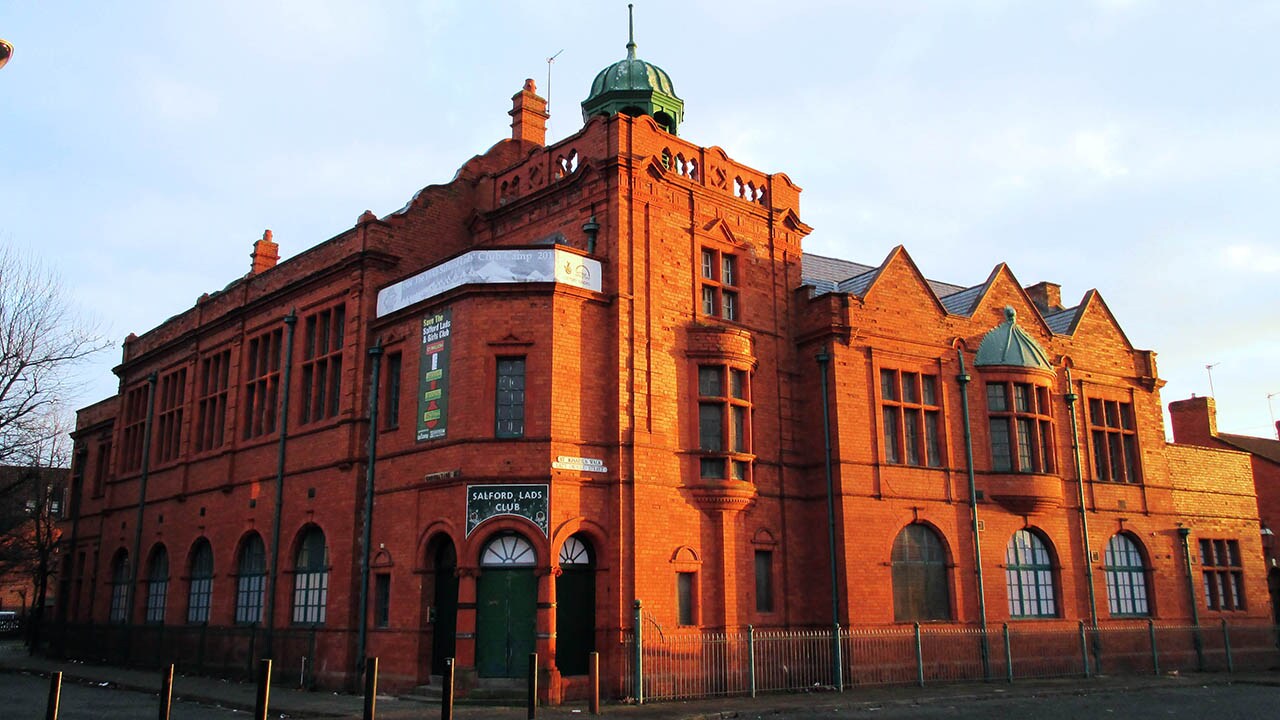View Finder Manchester

-
Salford Lads Club
Few youth clubs across the world can claim to have a history comparable to that of Salford Lads Club. Situated in Ordsall, one mile from the centre of Manchester, its iconic front sign was made famous in 1986 by appearing in the sleeve of the Smiths equally iconic album, "The Queen Is Dead." Fascinatingly, the image was shot by amateur photographer Stephen Wright on a £150 Nikon camera — a tiny budget for a photograph eventually exhibited at the National Portrait Gallery.
Its roots lie with two brothers, James and William Groves, from a family of brewers, who looked to establish a useful alternative for young boys to the teenage street gangs who roamed the North West at the beginning of the 20th century. It used the blueprint of the nearby Hulme Lads Club, which had been founded in the mid-19th century, and was opened by the man who would eventually go on to found the Scout movement, Robert Baden-Powell in 1904. Activities such as gymnastics, boxing and fives (a version of squash) were popular with local boys, and the club held an annual camp in Aberystwyth, Wales, documented today through the 100 Camps project, a look back at each annual camp with stories and interviews.
Many famous faces have passed through its renowned green doors, from famous actor Albert Finney (known for his role as Ed Masry in "Erin Brockovich," among other award-winning performances) to guitarist Graham Nash, original member of the Hollies who went on to be the Nash in Crosby, Stills, Nash and Young. Despite music and film stars being it’s main output, the club’s main hall was once used by Bobby Charlton, Duncan Edwards and Eddie Colman of Manchester United’s "Busby Babes," the latter two tragically dying in the 1958 Munich Air Disaster.
The club is now considered one of the finest surviving examples of a prewar men’s club and is open every day. But it's advised that you ring up before to remind them of your visit, so current members can take you around. You can view various projects set up by the club as well as a personal relic to the band that made it famous in The Smiths Room, a former squash court and gym space that is now plastered in songwriter memorabilia and fan Post-it notes.